Well, unbeknownst to me prior to our travels here, Nicaragua is a country in Central America well known for it’s coffee production. The climate of the highlands provide a perfect environment for coffee growing, and many different ¨fincas¨ (coffee farms) are located within a 5-10 minute drive or a short hike from our home in Matagalpa. In fact, there are plenty of coffee plants covering the mountainsides here, and we’ve been fortunate enough to be in town during harvest season. The presence of bright red coffee berries peeking out of the greenery adds vibrant color to the flora and fauna on our hikes. We’re also often passed on the street by pickup trucks carrying huge sacks of coffee beans piled on the bed, with the coffee workers sitting on top of them. Then, there’s the pleasant aroma of fresh roasted coffee beans that we’re sometimes treated to when we take a walk by one of the two coffee roasting factories in town.
So, Travis and I decided to take a little outing last week and visit one of these coffee fincas. We were joined by Mario and Carlek, our Nica friends who we do weekly language intercambios with. Because they are both college students majoring in ecotourism, they excitedly volunteered to take us to one of their favorite fincas and give us a personal tour. This was a bonus to us- that meant help figuring out which farm to visit, how to get there, and an authentic look and explanation of coffee production from a local perspective rather than having to pay for one of the tours offered at the larger fincas.
The first step on our tour was to catch a bus to the nearby town of San Ramon. Only 20 minutes away, this little spot offered a center of charm and community for all of the local coffee growers. From there we began to walk the several miles up into the hills to reach the finca, but fortunately our tour guide friends hailed a passing pickup truck and we climbed aboard the sacks of coffee for a lift to our destination. It was transportation in pure Nica style. I loved it. Pictured below is us and our friend Mario sitting on the bed of the truck.

 The finca itself consisted of a small community of clay-structured homes for the workers spread out among the coffee plants on the hillsides. Because we were there on a cloudy and rainy day, we were embraced by a sense of cozy tranquility as the workers greeted us hospitably from their homes and in the production area. Mario and Carlek brought us to see one of these houses where we met a few coffee pickers. Not common in Nicaraguan cities, these homes are made in a traditional style with the materials of the land and soil. They need to be rebuilt every 3-4 years once the clay starts to wear away.
The finca itself consisted of a small community of clay-structured homes for the workers spread out among the coffee plants on the hillsides. Because we were there on a cloudy and rainy day, we were embraced by a sense of cozy tranquility as the workers greeted us hospitably from their homes and in the production area. Mario and Carlek brought us to see one of these houses where we met a few coffee pickers. Not common in Nicaraguan cities, these homes are made in a traditional style with the materials of the land and soil. They need to be rebuilt every 3-4 years once the clay starts to wear away. 
 Some of the homes on the finca are built for long-term residents, but others are there to provide accommodation for seasonal pickers. In fact, a popular type of eco-tourism here in Nicaragua is for foreigners to come out and volunteer by working on a coffee farm for a week, a month or more. This provides the foreigner with a very authentic immersion experience living and working amongst the local culture. We’ve met several gringos in town who have given this a try and told us about it. Sounds like quite an experience if you want to live pretty “bare-boned” for a while.
Some of the homes on the finca are built for long-term residents, but others are there to provide accommodation for seasonal pickers. In fact, a popular type of eco-tourism here in Nicaragua is for foreigners to come out and volunteer by working on a coffee farm for a week, a month or more. This provides the foreigner with a very authentic immersion experience living and working amongst the local culture. We’ve met several gringos in town who have given this a try and told us about it. Sounds like quite an experience if you want to live pretty “bare-boned” for a while. Above is a picture of a coffee plant with berries ready for picking. The workers head out every morning before dawn, rain or shine, with their empty sacks and baskets. Here they search out and hand pick the ripest and most red berries that contain the coffee beans. We ran across a few women and their children with sacks full of berries and they let us take a look inside. It was interesting to break open the fruit and find a moist and fuzzy white bean.
Above is a picture of a coffee plant with berries ready for picking. The workers head out every morning before dawn, rain or shine, with their empty sacks and baskets. Here they search out and hand pick the ripest and most red berries that contain the coffee beans. We ran across a few women and their children with sacks full of berries and they let us take a look inside. It was interesting to break open the fruit and find a moist and fuzzy white bean. 
 Next, the workers bring the berries to an open-air processing room where they are first weighed in their sacks to be accounted for in the logbook, then poured into these large vats where they are thoroughly rinsed clean. Then, we were very happy to hear they have a machine that separates each bean from the berry. I was sure hoping this didn’t have to be done by hand!
Next, the workers bring the berries to an open-air processing room where they are first weighed in their sacks to be accounted for in the logbook, then poured into these large vats where they are thoroughly rinsed clean. Then, we were very happy to hear they have a machine that separates each bean from the berry. I was sure hoping this didn’t have to be done by hand!  Now the separated beans are brought back outside to the second stage of washing and drying. They are dumped out on screens where water is poured out on them and they begin to take in the sun. As you can see below, the colors of the beans are different based on how dry they are. At some larger farms, we’ve seen the beans at this stage spread out over sheets encompassing the size of a typical grain or cornfield. I’m not sure exactly how long it takes for the beans to fully dry out, but I know they can’t move forward to the roasting process until the time is right. Once they are ready, the workers again throw all the beans into sacks where they are gathered up and brought to one of Matagalpa’s roasting factories, or a smaller, private-owned roaster. Here the beans are roasted to perfection, bagged and labeled, and then sent abroad to be brewed by you.
Now the separated beans are brought back outside to the second stage of washing and drying. They are dumped out on screens where water is poured out on them and they begin to take in the sun. As you can see below, the colors of the beans are different based on how dry they are. At some larger farms, we’ve seen the beans at this stage spread out over sheets encompassing the size of a typical grain or cornfield. I’m not sure exactly how long it takes for the beans to fully dry out, but I know they can’t move forward to the roasting process until the time is right. Once they are ready, the workers again throw all the beans into sacks where they are gathered up and brought to one of Matagalpa’s roasting factories, or a smaller, private-owned roaster. Here the beans are roasted to perfection, bagged and labeled, and then sent abroad to be brewed by you.
 So, this was about the extent of our tour of the finca. We enjoyed a full morning of Spanish practice with Mario and Carlek, and hopefully the coffee production details I’ve shared with you are close enough to the true Spanish to English translation. I did my best!
So, this was about the extent of our tour of the finca. We enjoyed a full morning of Spanish practice with Mario and Carlek, and hopefully the coffee production details I’ve shared with you are close enough to the true Spanish to English translation. I did my best!All in all, I’ve given my daily cup of coffee a lot more thought since arriving in Nicaragua. No longer do I see it as something derived from a well-made coffee pot; instead, it is the final product of little red berries from beautiful plants that have passed through multiple hands, stages and journeys. All this to be enjoyed and savored by us in our favorite coffee café or at our breakfast table.



















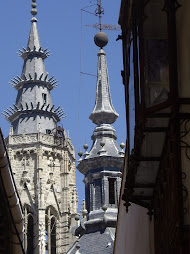




















































































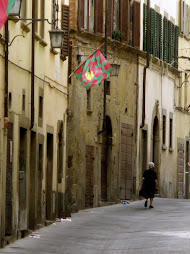















































































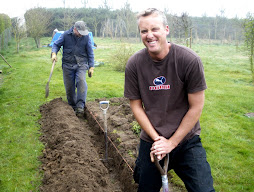
























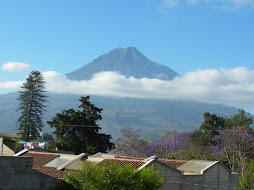









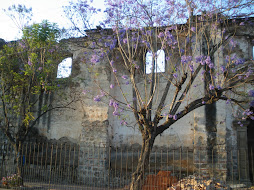


























































































































































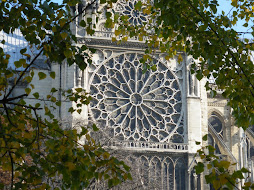





































































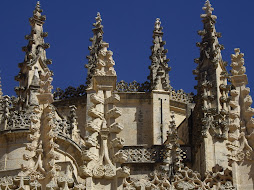









































No comments:
Post a Comment